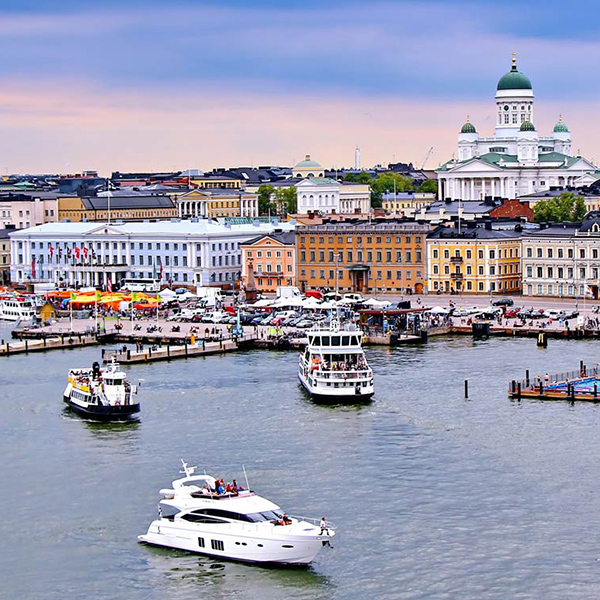2022 Stories
Explore the 2022 stories below to learn how Bentley users are helping to address the United Nations SDGs through the infrastructure projects on which they work. These stories are organized by sustainability trends to help you navigate the many projects that showcase how our users are sustaining both our economies and the environment.
Mitigation and Adaptation
85% of the world’s population has already been affected by events directly related to climate change.
Considered by UN experts as the “largest, most pervasive threat the world has ever experienced,” human-induced climate change in 2022 amped up extreme weather around the globe, leading to exacerbated droughts, floods, wildfires, heat waves, and food insecurity.
In a scenario where 1.5° Celsius of warming occurs by 2030, almost half the world’s population could be exposed to a climate hazard related to heat, drought, flood, or water stress in the next decade – up from 43% today.
Infrastructure assets require extraordinary adaptation and modification to decarbonize while making our communities more resilient.
Unlike operational carbon emissions, which can be reduced over time, embodied carbon emissions, which are generated from materials and construction, are locked in place as soon as an infrastructure asset is built. Embodied carbon represents 57% of all emissions. Just three materials – concrete, steel, and aluminum – are responsible for 23% of global emissions. There is an incredible opportunity for embodied carbon reduction through better design and material selection.
Tackling Global Challenges
Earth’s resources are not infinite. Reducing waste, water, and material consumption is one of the most significant societal challenges we must overcome.
In our current economy, we take materials from the Earth, make products from them, and eventually throw them away as waste – this is a linear process. However, in a circular economy, also known as circularity, we avoid producing waste and consuming resources in the first place, maximize efficiency, circulate resources, and regenerate nature.
Circularity is a systems solution framework that tackles global challenges like climate change, biodiversity loss, waste, and pollution. The application of the concept extends the lifespan of products, materials, resources, and infrastructure.
Circularity is the most sought-after concept for a sustainable future. Many organizations already incorporate innovative circular principles in their infrastructure projects.
Energy Transition
The Global Energy Crisis And Government Subsidies Turbocharged The Energy Transition. Some Experts Say These Factors May Have Knocked As Much As Ten Years Off The Timeline.
Transitioning to low-carbon energy sources is critical to ensuring universal access to sustainable and affordable electricity. More than 50% of the carbon that needs to be cut over the next decade will come from decarbonizing industrial and energy systems.
One in 10 people still lack access to electricity. As demand grows, the most effective way to future-proof infrastructure is to pursue quick wins by leveraging existing, low-cost, mature technologies.
Diversifying energy sources is key. Renewable energy production must accelerate by combining all renewable sources —solar, geothermal, wind, and hydroelectric — to generate enough low-carbon energy to power our world.
Increasing the efficiency of any system that consumes, produces, or distributes energy creates immediate environmental and economic payback. Energy efficiency alone represents more than 40% of the emissions abatement required by 2040.
Cities Are Responsible For More Than 60% Of Greenhouse Gas Emissions.
Just 25 mega-cities produce 52% of the world’s urban greenhouse gas emissions. They are simultaneously the biggest driver and the biggest victim of climate change effects, therefore cities have important motivations for addressing it. More than 10,000 cities have already committed to reducing their carbon emissions by 2050.
But cities also face many other critical challenges. While only 50% of the world’s urban population have convenient access to public transport, 17 people die from air pollution every minute. The disruptive nature of COVID-19 and the emerging global uncertainties were stark reminders that urban areas need to be prepared for an ever-changing and unpredictable future.
We must keep finding methods and technologies that empower thriving cities to balance quality of life, health, decarbonization, and climate resilience.
Cities are here to stay, and the future of humanity is undoubtedly urban, but not exclusively in large metropolitan areas – small and medium urban areas will continue to develop.

